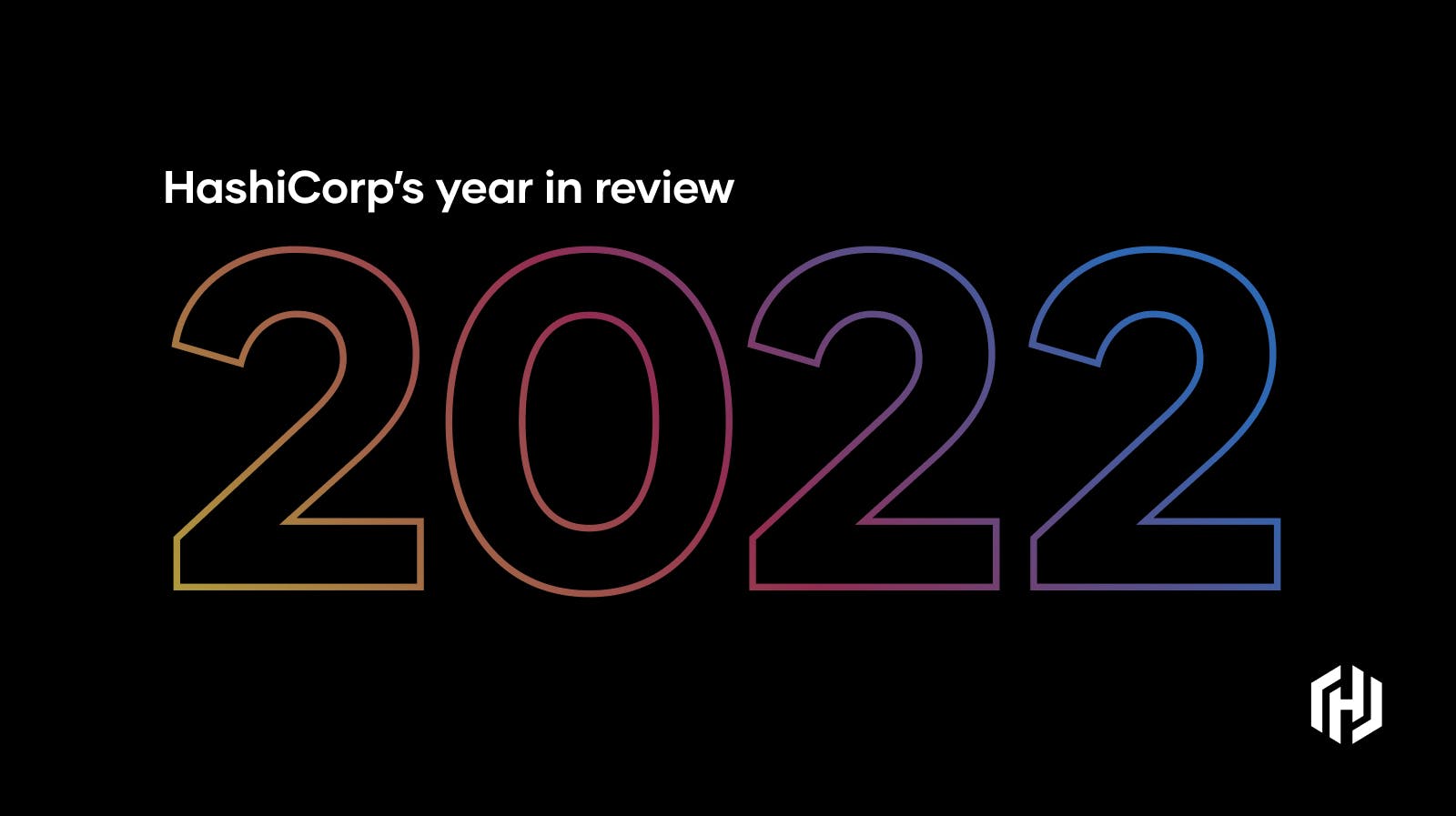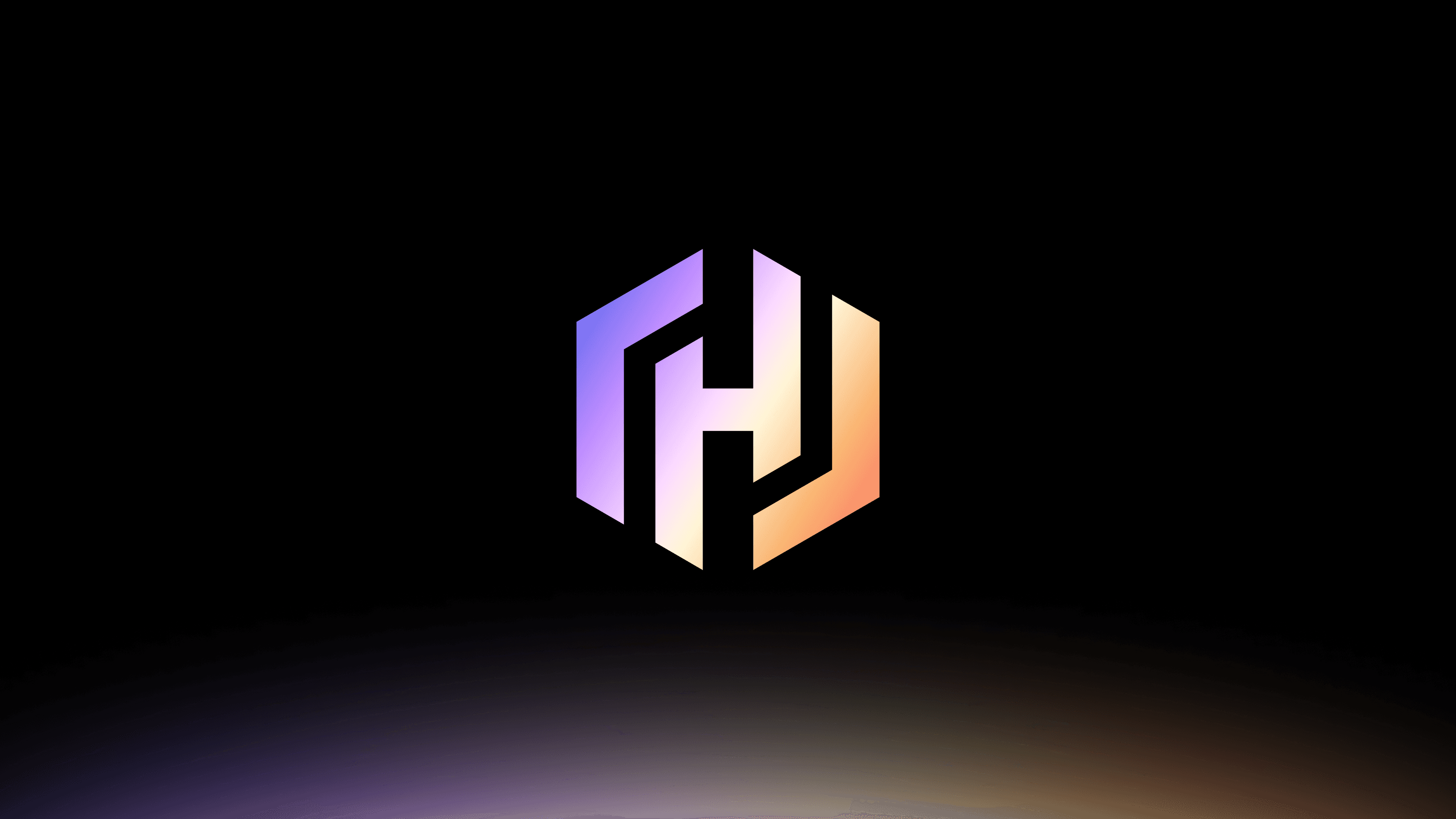As a new year draws closer, it’s natural to be reflective — this year, we’re feeling a bit more reflective than usual. While 2022 was a turbulent year for many in the tech industry, there was also much to celebrate. The year — our first after going public in 2021 — marked HashiCorp’s 10th anniversary (or Hashiversary, as we call it). We couldn't be more grateful for the support of the HashiCorp community, customers, partners, and employees who helped us reach this milestone.
From the return of HashiConf Europe and HashiConf Global in person to the general availability of HCP Boundary and the introduction of HCP Waypoint, it’s been an exciting year. We can’t list all of 2022’s milestones, but we think these are some of the most important.
»There Were a Lot of Product Releases and Updates
We made major feature updates across the entire HashiCorp product ecosystem — here are some of the most significant:
-
After the landmark release of HashiCorp Terraform 1.0 in 2021, we released versions 1.2 and 1.3 this year. Cloud Development Kit (CDK) for Terraform is also now generally available with the release of version 0.12 (followed by versions 0.13 and 0.14), allowing users to write Terraform configurations in their choice of languages, such as TypeScript or Python, while supporting multi-cloud deployments. The CDK for Terraform on AWS is now also generally available.
In other Terraform news, users can now access run tasks from the HashiCorp Terraform Registry. The addition of Drift Detection for Terraform Cloud lets users continuously check for any drift between the last applied configuration and the current state of infrastructure. Terraform Cloud also added enhanced functionality like continuous validation of infrastructure configurations, no-code provisioning, and native Open Policy Agent (OPA) support.
-
HashiCorp Consul’s ecosystem grew rapidly in 2022. The releases of Consul 1.12, 1.13, and 1.14 added features like cluster peering, support for AWS Lambda functions, and improved security on Kubernetes with HashiCorp Vault. New capabilities in HCP Consul provide users with global visibility and control of their self-managed and HCP-managed deployments. In June, we announced the general availability of HCP Consul on Microsoft Azure to support production workloads.
-
We announced the general availability of HCP Boundary at HashiConf Global. In addition, we released versions 0.8, 0.9, and 0.10 of HashiCorp Boundary this year, which enhanced credential management as well as identity and access management (IAM) workflows in the admin UI, and added new health monitoring observability metrics, worker registration enhancements, and SSH key credential management.
-
HashiCorp Vault versions 1.10, 1.11, and 1.12 became available this year, bringing updates like PKI enhancements for better certificate management, transit improvements for encrypting data, Snowflake and Redis support for dynamic secrets, and dynamic service accounts for LDAP and Active Directory. Vault also saw the addition of login multi-factor authentication (MFA) support to open source Vault and HCP Vault, along with HCP Vault support for Azure.
This spring we also released the HashiCorp Certified: Vault Operations Professional exam, our first professional-level certification exam. (If you’re a cloud engineer specializing in DevOps, IT, security, or development, maybe make a New Year’s resolution to learn more about HashiCorp’s Product Certifications program.)
-
We announced the public beta of HCP Waypoint at HashiConf Global. HCP Waypoint lets developers easily deploy, manage, and observe applications across their infrastructure or platforms. We also released Waypoint versions 0.7, 0.8, and 0.9 this year.
-
A lot of focus for Nomad releases this year has been on further simplifying the user experience and workflows. Nomad 1.3 brought the addition of native service discovery, edge workload support, CSI general availability, and a new UI for viewing evaluation information. Nomad 1.4 introduced new features like enhanced service discovery support, ACL roles and token expiration, UI improvements, and Nomad Variables, which let users store configuration values, including static secrets.
-
HCP Packer became generally available this spring after its public beta was announced at HashiConf 2021. HCP Packer allows users to manage images across multiple clouds, improve workflows, and standardize the way organizations secure images. The GA release also introduced new features like security workflows and the ability to track and query images using custom metadata.
-
The release of Vagrant 2.3 in September introduced a Go runtime, a new Vagrant executable written in Golang that ties the Vagrant architecture more closely into the broader HashiCorp ecosystem. This release marks our first step on the road to Vagrant 3.0, which will allow Vagrant to be ported to Go while still supporting its Ruby-based features.
»Introducing HashiCorp Developer
In October, we rolled out HashiCorp Developer after announcing the beta release during HashiConf Europe in June. The new website consolidates all product documentation and learning materials in one spot for practitioners to learn about HashiCorp products, including interactive labs, sample code, videos, and tutorials. Instead of product documentation and tutorials residing in multiple places, HashiCorp Developer makes it easy to find whatever resource you need.
»Catching Up with Our Community
After two years of virtual events due to the pandemic, it was exciting to have the option to meet face-to-face during HashiConf Global and HashiConf Europe this year.
HashiConf Global 2022 took place in early October and attracted more than 10,000 in-person and virtual attendees from all over the world. There were more than 40 keynote and technical sessions focusing on topics like zero trust security, infrastructure and application automation, and cloud service networking. We also shared updates for our cloud-managed and open-source products. If you didn’t get a chance to attend, you can find videos of the talks on our HashiConf Global 2022 YouTube playlist. Here are a few of our favorites:
- Why You Need a Faster Secrets Rotation Strategy
- Enhanced GitOps Workflows With Terraform Cloud
- Using OIDC With HashiCorp Vault and GitHub Actions
- Understanding the Power of HashiCorp Boundary: SSH Credential Injection, Private Vault Access, and Multi-Hop
- How CrowdStrike Deployed Consul & Vault at Scale for Brownfield Infrastructure
After a two-year hiatus, HashiConf Europe 2022 also took place this June in Amsterdam. It was a sold-out event, with more than 700 in-person and 4,000 online attendees. The two days featured keynotes, product announcements, and more than 30 breakout sessions, hallway track sessions, and product workshops. If you haven’t caught up on announcements and news from HashiConf Europe, the sessions are also available to watch on-demand. Popular talks include:
- Using Terraform Enterprise to Support 3,000 Users at Booking.com
- Non-Technical Challenges of Platform Engineering
- WebAssembly and HashiCorp Nomad for Next Wave Microservices
- Secrets Management at Swiss Federal Railways (SBB) with HashiCorp Vault
- Building a Cloud Operations Mindset in the Financial Sector: A Diary of Change
After a couple of challenging years, 2022 saw the return of HashiCorp User Groups (HUGs). We started HUGs in 2015 to bring local user communities together to educate each other on HashiCorp tools, share best practices, and build strong connections. There are currently 155 HUGs operating in 56 countries, with more than 45,000 members around the globe — find one near you or reach out to us about starting your own HUG!
»Recognition and Relationships with Cloud and Technology Partners
We deepened our ongoing partnership with AWS in 2022. In addition to topping one billion downloads of the AWS Terraform provider, we won AWS’ Security Partner of the Year Award in North America at AWS re:Invent in November (where our booth even won an award). And in April, we achieved the Amazon Web Services (AWS) DevOps Competency for development, security, and operations (DevSecOps).
In 2022 we were honored to be recognized with additional awards from some of our most important partners, including:
- The Palo Alto Networks 2022 Technology Partner of the Year Award
- The 2022 Datadog Partner Network Integration Developer Partner of the Year Award
- The 2022 Microsoft U.S. Partner of the Year Award winner for OSS on Azure and a finalist for the overall 2022 Microsoft OSS on Azure Partner of the Year Award
The year was also marked by a wave of new and enhanced technology partner integrations across our product line, including Styra, Auth0, and Torq for Terraform; Tencent Cloud, Red Hat, and Cockroach Labs for Vault; and AWS Lambda, New Relic, and Cisco for Consul.
»HashiCorp Now Has Nearly 3,900 Customers
Once again, in 2022 we are thankful for how many of the world’s leading companies choose to put their trust in our products. We added more than 1,150 new customers this year for a total of almost 3,900. You can learn more about how our customers are finding success with HashiCorp products in our latest customer case studies and webinars from companies like Comcast, Booking.com, and Deutsche Bank.
»We Grew to 2,500 Employees — And Counting
The number of people working at HashiCorp grew by more than 50% this year, as we added more than 850 new employees to expand our team to reach 2,500 people around the world. On top of that, 70 interns joined us for the summer as part of the HashiCorp Early Career Program.
We couldn’t be more proud of the dedicated, welcoming, and inclusive culture our team is building, and it’s great that folks are taking notice: Fortune and Great Place to Work ranked us in the top 100 for best places to work in the Bay Area, for millennials, for women, and for parents. Comparably also ranked us in the top 100 companies for a bunch of “bests”: best company outlook, HR teams, CEOs for diversity, work-life balance, company culture, and CEO. And we’re hiring, in case you’re looking for your next challenge.
»Here’s to 2023
2022 was a big year for HashiCorp, and we could not have achieved this success without our global community of users, customers, partners, and employees. We’re looking forward to continuing to work side by side with you all in 2023 to build the future of cloud infrastructure together. Thank you all for being an important part of our journey — and for letting us be part of yours.





